I felt a pop and folded like a house of cards.
Two years ago, I herniated a disc during my top deadlift set. I was training earlier than usual so my body was rather stiff. Despite a brief warm-up, I loaded up the usual 405 pounds and got into position. Arms straight, hips hinged, and belt locked. When I started pulling, I noticed my lower back began to round. Just as the plates started to lift off the floor, a sudden jolt of pain shot across my lower back and into my leg. I dropped the bar and felt as if my spine had just snapped in half. In excruciating pain, I persevered through the rest of my training session and hobbled out of the gym.
For almost a year, I refused to step foot on the deadlift platform. The pain in my back was constant and almost unbearable with sitting, bending, and twisting. Every time I had to tie my shoes or pick something off the floor, the sharp and shooting pain down my leg reminded me of the traumatic injury.
For many who experience this injury, the story ends here. They never deadlift again out of fear of another injury and accept living with pain for the rest of their lives.
But here I am two years later, back to heavy deadlifts and even preaching to others to do the same. After much self-analysis and a deep dive into the literature, there are several common misconceptions about the deadlift. Before I get into the practical tips, let’s clear these up.
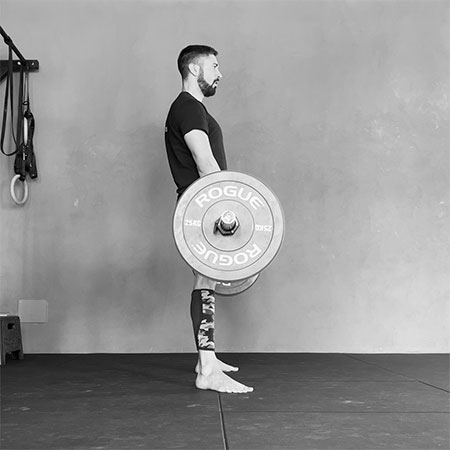
The Fallacies
Fallacy #1:SUMO is cheating
You’ve heard this before and you’ll hear it again. A legal deadlift across the powerlifting board is defined as the knees and hips locked out with the chest vertical and shoulders in line with the chest. As long as these conditions are met, the weight is controlled throughout, and you follow the commands of the referees, you have performed a legal deadlift. This can be accomplished by both the sumo and the conventional deadlift variations, and hence, both variations are permissible in all powerlifting federations. However, there are differing kinematics and kinetics between the sumo and the conventional deadlift which affect individual performance and possibly injury risk. In the sumo deadlift, the distance between the load and the hips is minimized and the trunk also starts off about 10 degrees more vertical1. As such, the external flexor moment at the hip, knee, and L5-S1 junction as well as the shear forces experienced by the lumbar spine are also reduced given the same load as a conventional deadlift. Accordingly, several studies have reported that the sumo deadlift is associated with fewer lower back injuries compared to conventional deadlift. In addition, the sumo deadlift comprises 25-40% less work compared to the conventional deadlift because the load travels a shorter distance2. These findings suggest that the sumo deadlift is far superior to the conventional deadlift for both performance and safety. But, the mechanical advantages of the sumo deadlift are largely compensated by a greater mediolateral ground force, which is the shear force that splits the ground apart through the feet3. In other words, a significant portion of force output is distributed towards the horizontal axis and away from the vertical axis. Therefore, from a performance standpoint, neither the sumo nor the conventional deadlift seems to be clearly advantageous across all athletes, but an individual may be anatomically best suited for one style or the other. For example, one of my training partners finds the sumo style most fitting for his anatomical structure: a long torso, shorter arms, and pretty good hip mobility. With sumo, he can pull over 700 pounds (in Crocs) but struggles with 500 pounds using conventional. So, identifying the deadlift style that best accommodates your anatomical proportions is among the most important first steps to your powerlifting journey.
Below is a chart highlighting the differences between the conventional and sumo deadlift.
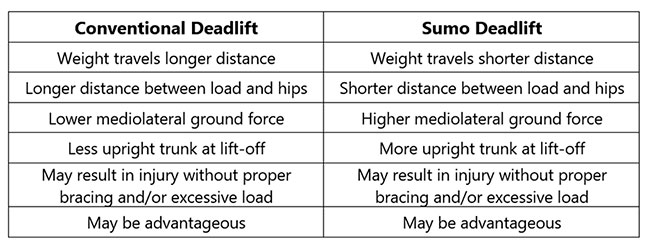
The bottom line: Sumo is NOT cheating and you should use it for competitive powerlifting if your anatomical structure is best fit for it.
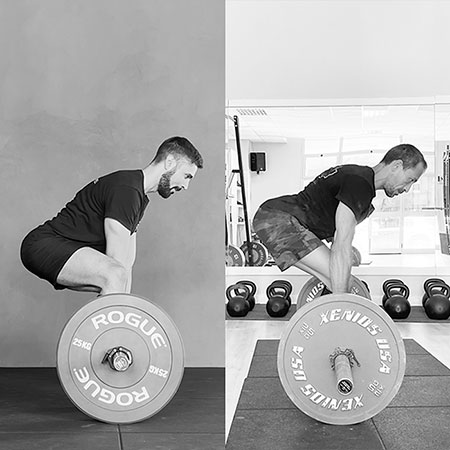
Here is a chart to simplify the general recommendations based on your individual proportions:
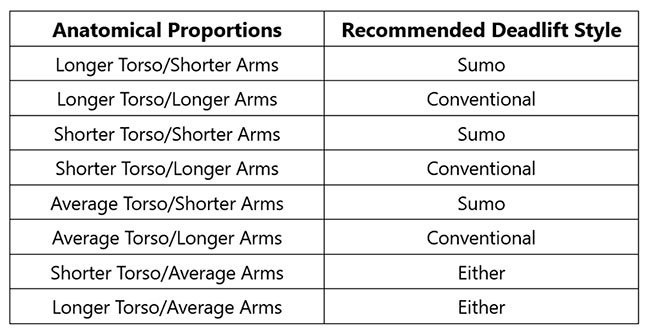
Keep in mind these are just recommendations. The only way to know which style is best for you is to try both first-hand, ideally working with an experienced coach. For me, I have a longer torso and shorter arms, which would suggest a sumo deadlift to be most suitable. However, after trying both types, I find the conventional style more stable, perhaps as a reflection of my current muscular balance.
Fallacy #2: Avoid rounding your back
Compromised spinal stability is often attributed to erector fatigue/weakness as the external flexion moment generated by the lifter-load system overcomes the internal extension moment generated by active muscle contraction1, 4. In other words, the strength needed to move the weight is not the same as the strength needed to use the weight. This is where I made my mistake: I kept pulling even though I felt my erectors giving out. So, now my program includes isolated lumbar extension (i.e., bodyweight back extensions) and rotational stability exercises (i.e., unilateral rows without chest-support to engage the transverse abdominis, obliques, and deep lumbar paraspinals). Anyways, the whole idea of maintaining a truly neutral spine when deadlifting is debatable. A healthy spine should move in all directions. It is true that biomechanical studies reveal that less tensile stress is placed on the posterior ligament system of the spine when deadlifting with relative lumbar extension and posterior disc herniations in the lumbar spine are often associated with spinal flexion postures3, 5. But there is little evidence to suggest that lifting with a rounded (kyphotic) back, or any specific posture for that matter, increases one’s risk for lower back pain. Rather, clinicians with higher negative back beliefs measured by the Back-Pain Attitudes Questionnaire (Back-PAQ) are more likely to falsely believe that lifting with a rounded back is dangerous6. Still, prompting athletes to “maintain a neutral spine” and “use your legs, not your back” may be helpful to engage the proper musculature and encourage postural control with heavy lifting. Some studies report that lumbar flexion of around 22 degrees is inevitable during the lift initiation position, despite the lumbar spine appearing neutral from a sagittal view7. Further, lordotic postures are associated with increased extensor activation measured by EMG activity but are also associated with increased segmental axial compression and shear forces at the L5-S1 junction (one of the most vulnerable junctions to injury)8. So instead of trying to chase some “perfect” form that doesn’t necessarily exist, focus on using appropriate load and progression and managing weak links in your kinetic chain.
The bottom line: As long as you can control the weight and maintain a stable posture throughout the lift, some lumbar flexion is okay.
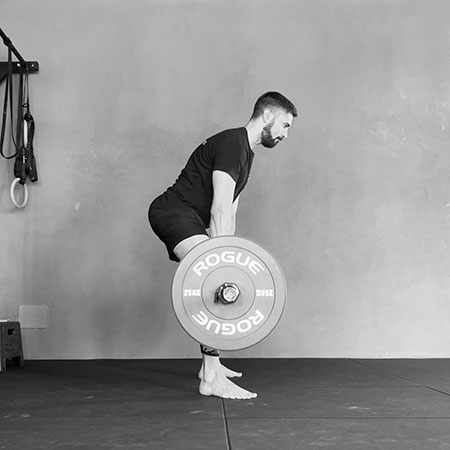
Fallacy #3: Belts prevent lower back injuries
Lifting belts don’t prevent injury. Proper bracing does. But proper bracing can be facilitated with a belt. As we established previously, stability is crucial when lifting heavy. Internal stability is created by tension across the muscles of the midsection such as your transverse abdominis, erectors, pelvic floor, and diaphragm. Activation of these muscles can be facilitated with the use of a belt, a Valsalva maneuver, or both. There is quite a bit of discrepancy on whether or not a lifting belt actually reduces the likelihood of injury in powerlifting. Many lifters, including myself, have herniated a disc with a belt on, so it’s definitely not a silver bullet. However, if applied correctly, a belt can still be useful in engaging your midsection muscles and maximizing abdominal pressure, which in turn, should theoretically unload the spine from excessive strain9. Some researchers argue that lifting belts actually deactivate the midsection muscles and may be utilized as a means to alleviate the symptoms of pre-existing injuries10. Of course, in these cases, existing injuries would only be exacerbated further. In determining whether you should use a lifting belt or not, it is difficult to give a binary answer of “yes” or “no”. Almost always, the answer is “it depends.” From what I have seen, lifting belts are most practical for heavier sets (less than 5 repetitions) and only when used with proper bracing via muscle contractions, especially the respiratory muscles. In fact, the ability to brace with strong respiratory muscles is positively associated with powerlifting performance11. So, improving bracing ability not only reduces injury risk, but may also correlate to increased totals.
The bottom line: If you do choose to use a belt, it should supplement your internal stability, not serve as a crutch for a lack of stability.
Tips For Training
As we now know, recruiting the proper musculature is cardinal in heavy lifting. Unlike the bench press and squat, the deadlift starts concentrically and ends eccentrically. This can often make it more challenging to brace and engage all the necessary muscles right from the start. If you struggle to engage the posterior chain during the deadlift, try Romanian deadlifts. Starting from an upright position by having the bar on a rack first can mimic the eccentric-then-concentric sequence that we use in the bench press and squat. If you struggle with engaging the lats specifically, have someone pull anteriorly on the bar with a strap or an elastic band while you deadlift. To preserve a relatively vertical bar path (the most biomechanically efficient bar path), your lats must fire, and this can be transferred to your normal deadlift form with practice.
If your primary obstacle is achieving stability during the initial lift-off phase, try using a lighter load with a deficit of around 2-4 inches. The reduced distance of the bar from the ground at the starting position will help you get used to bracing at the lowest point of the deadlift and initiating the lift-off with relatively high spinal flexion. This is an example of strengthening a weak link in the chain. Also, balance drills such as dynamic single-leg exercises (such as the single-leg deadlift or the pistol) and bodyweight or kettlebell squats on an unstable surface can help you improve your overall stability across all powerlifting lifts.
Finally, have a plan. In powerlifting, this means to consider training periodization—the epitome of performance and recovery3, 12, 13. Training to absolute failure every time is not sustainable. Without proper recovery, you’re either going to plateau for months or you’re going to get hurt. Structuring your training with respect to frequency, intensity, volume, and progression is going to help define an objective protocol to ensure progress and recovery, but also reliably timing your peak strength on meet day. To develop a training program, I would advise you to work with a coach, especially if you are new to powerlifting. But you can also check out the other StrongFirst articles to get a better idea of training periodization.
In conclusion, deadlifting is a highly beneficial exercise that can be advantageous for a wide range of individuals, extending beyond the realm of powerlifters. It provides comprehensive training by engaging multiple muscle groups, contributing to overall strength and fitness. Getting injured is an opportunity to take a step back and learn from your mistakes. While misconceptions may arise, it is important to be able to identify uninformed opinions and limiting beliefs that can negatively impact your training.
Deadlift safe, deadlift heavy with
KNOCK ′EM DEAD
The Ultimate Deadlift Guide for World Class Strength & Skill
By Fabio Zonin, StrongFirst Certified Master Instructor
References
1 V. J. Ramirez, B. Bazrgari, F. Gao, and M. Samaan, “Low Back Biomechanics during Repetitive Deadlifts: A Narrative Review,” https://doi.org/10.1080/24725838.2021.2015642, vol. 10, no. 1, pp. 34–46, 2022, doi: 10.1080/24725838.2021.2015642.
2 E. Dudagoitia, A. García-de-Alcaraz, and L. L. Andersen, “Safety of powerlifting: A literature review,” Sci Sports, vol. 36, no. 3, pp. e59–e68, Jun. 2021, doi: 10.1016/J.SCISPO.2020.08.003.
3 M. Hales, “Improving the deadlift: Understanding biomechanical constraints and physiological adaptations to resistance exercise,” Strength Cond J, vol. 32, no. 4, pp. 44–51, Aug. 2010, doi: 10.1519/SSC.0B013E3181E5E300.
4 C. Edington et al., “The Effect of Set Up Position on EMG Amplitude, Lumbar Spine Kinetics, and Total Force Output During Maximal Isometric Conventional-Stance Deadlifts,” Sports 2018, Vol. 6, Page 90, vol. 6, no. 3, p. 90, Aug. 2018, doi: 10.3390/SPORTS6030090.
5 M. J. Mueller and K. S. Maluf, “Tissue Adaptation to Physical Stress: A Proposed ‘Physical Stress Theory’ to Guide Physical Therapist Practice, Education, and Research,” Phys Ther, vol. 82, no. 4, pp. 383–403, Apr. 2002, doi: 10.1093/PTJ/82.4.383.
6 D. Nolan, K. O’Sullivan, J. Stephenson, P. O’Sullivan, and M. Lucock, “What do physiotherapists and manual handling advisors consider the safest lifting posture, and do back beliefs influence their choice?,” Musculoskelet Sci Pract, vol. 33, pp. 35–40, Feb. 2018, doi: 10.1016/j.msksp.2017.10.010.
7 G. Lehman, “Reconciling spinal flexion and pain: we are all doomed to failure but perhaps it doesn’t matter — Greg Lehman.” https://www.greglehman.ca/blog/2018/4/2/reconciling-spinal-flexion-and-pain-we-are-all-doomed-to-failure-but-perhaps-it-doesnt-matter (accessed Apr. 02, 2023).
8 N. Arjmand and A. Shirazi-Adl, “Biomechanics of changes in lumbar posture in static lifting,” Spine (Phila Pa 1976), vol. 30, no. 23, pp. 2637–2648, Dec. 2005, doi: 10.1097/01.BRS.0000187907.02910.4F.
9 S. Srivastav, R. T. Jamil, and R. Zeltser, “Valsalva Maneuver,” Encyclopedia of the Neurological Sciences, pp. 591–592, Oct. 2022, doi: 10.1016/B978-0-12-385157-4.00517-0.
10 J. Siewe, J. Rudat, M. Röllinghoff, U. J. Schlegel, P. Eysel, and J. W. P. Michael, “Injuries and overuse syndromes in powerlifting,” Int J Sports Med, vol. 32, no. 9, pp. 703–711, 2011, doi: 10.1055/S-0031-1277207/ID/42.
11 P. M. Ferland and A. S. Comtois, “Classic powerlifting performance: A systematic review,” J Strength Cond Res, vol. 33, pp. S194–S201, 2019, doi: 10.1519/JSC.0000000000003099.
12 M. C. Cholewinski et al., “The Effects of a Peaking Protocol on Heart Rate Variability and its Predictive Associations with Wilks Coefficient in Competitive Powerlifters,” International Journal of Strength and Conditioning, vol. 2, no. 1, Jun. 2022, doi: 10.47206/IJSC.V2I1.115.
13 C. Grandou, Wallace, A. J. Lee, and Franco M, “Symptoms of Overtraining in Resistance Exercise: International Cross-Sectional Survey”, Accessed: Apr. 02, 2023. [Online]. Available: http://shura.shu.ac.uk/26713/

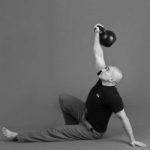
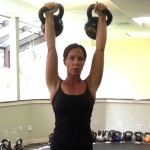
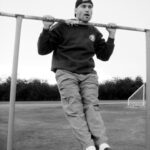



Jeremy, you don’t mention leg length – can you comment on whether this is an important variable you haven’t studied or if it’s not important?
Thanks.
-S-
Really nice and in depth guide. Thank you Jeremy. Looking forward to more guides.